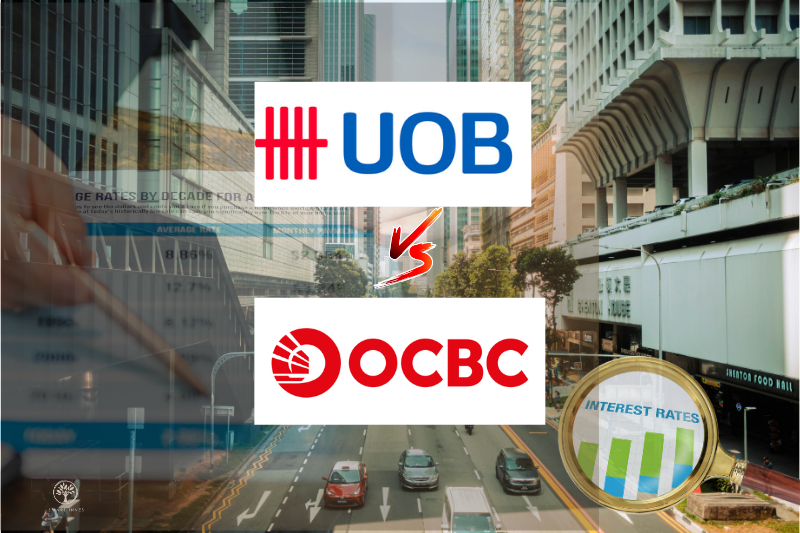Singapore’s big three banks have long been the backbone of local portfolios.
It’s not a surprise that both United Overseas Bank (SGX: U11), or UOB, and Overseas-Chinese Banking Corporation (SGX: O39), or OCBC, attract a lot of attention for their long track record in paying dividends.
With interest rates starting to ease, investors are watching to see how both banks adjust to thinner margins and softer lending demand.
UOB is pushing harder into the region, while OCBC leans on its wider, more diversified business mix.
But the real question is which approach will shine as the interest rate cycle turns.
UOB: Expanding regional footprint
UOB has been quietly extending its reach across ASEAN in recent years.
The purchase of Citigroup’s (NYSE: C) consumer-banking units in Malaysia, Thailand, Vietnam, and Indonesia brought in millions of new customers and gave the bank a stronger footing in some of the region’s most dynamic markets.
The task now is integration.
Management has been working to cross-sell products such as credit cards, personal loans, and wealth solutions, making the expanded network more profitable over time.
In the first half of 2025 (1H2025), the bank’s net interest income (NII) remained stable at S$4.7 billion.
Under non-interest income, net fee income recorded double-digit growth, supported by stronger wealth and card fees.
Overall, UOB earned about S$4 billion in operating profit, up 3% compared to a year ago.
UOB declared an interim dividend of S$0.85 per ordinary share, representing a payout ratio of approximately 50%, plus the second tranche of its special dividend worth S$0.25 per share, underscoring the management’s confidence in its capital strength.
The local bank’s appeal lies in its ASEAN growth story, a measured but strategic push into economies such as Vietnam and Indonesia, where rising affluence should underpin credit demand.
While near-term earnings will be constrained by narrowing margins, its strong capital base and disciplined dividend record make it a candidate for investors seeking income with a regional growth kicker.
OCBC: A diversified source of revenue
OCBC runs on more than one engine.
Beyond traditional lending, the bank has built sizable businesses in insurance and wealth management, which gives it an edge when rates start to drift lower.
Through its 89% stake in Great Eastern Holdings (SGX: G07), OCBC is plugged into the region’s fast-growing life-insurance and investment markets, a useful income cushion when lending margins tighten.
That diversification works both ways.
It gives OCBC greater earnings stability over the long run, but it can also make quarterly results look a little uneven when insurance valuations swing with the markets.
For 1H2025, OCBC made about S$3.7 billion in profit — roughly 6% below last year’s level.
The softer showing mainly came from thinner lending margins and a quieter performance at its insurance arm.
The bank’s net interest margin eased to 1.98% for 1H2025, coming in at 1.92% in 2Q2025.
In fact, management guided that full-year margins to land somewhere around 1.9% to 1.95%, with higher funding costs still eating into spreads.
Lending was up by around 9% year on year, while deposits grew by 10% over the same period.
It’s a steady outcome that highlights the depth of OCBC’s customer base across the region.
Non-interest income climbed 8% year on year to S$2.6 billion, thanks to stronger card spending and wealth-management flows.
Elsewhere, the bank’s wealth management income, including private banking, premier private client, premier banking, insurance, asset management and stockbroking, inched up 4% year on year to about S$2.7 billion, making up a little more than a third of group income.
OCBC’s diversified business gives it multiple earnings levers — banking, insurance, and wealth — that help smooth out performance across cycles.
While margin compression is a short-term drag, the bank’s strong capital position and recurring fee income lend it staying power.
Growth Potential: UOB vs OCBC
What’s UOB’s edge?
UOB’s regional expansion gives it a natural runway for growth.
The integration of Citi’s ASEAN consumer assets adds scale and broadens its digital-banking base.
Fee-income growth from wealth and payments will be key as interest-driven earnings normalise.
On the other side, OCBC’s edge stems from its diversified platform.
The bank’s Greater China franchise, coupled with its insurance arm, allows it to capture opportunities beyond ASEAN.
Assets under management rose 11% year on year to S$310 billion, highlighting the continued momentum in wealth.
Get Smart: Choose Your Flavour
Both UOB and OCBC remain dependable long-term investments.
UOB edges ahead for investors chasing dividend strength coupled with ASEAN-driven expansion.
OCBC is a broader financial ecosystem with a steadier but less explosive upside.
Both face the same margin pressure, yet their income levers differ, UOB’s is through regional lending, while OCBC’s is through wealth and insurance.
Imagine a life where steady income flows, no matter the market. Our new free report, “Retire Early with Dividends,” reveals how. We’ve pinpointed 5 dependable Singapore dividend stocks that offer a proven, stress-free path to financial freedom. Stop just dreaming and start building your early retirement plan today. Your free guide awaits here.
Follow us on Facebook, Instagram and Telegram for the latest investing news and analyses!
Disclosure: Evan does not hold shares in either UOB or OCBC.






